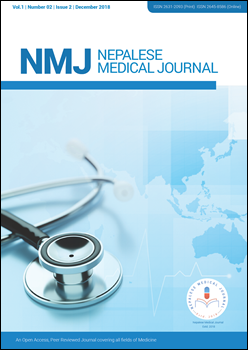Fractional Ablative Carbondioxide Laser Resurfacing for Acne Scars - A Single Centered Study
DOI:
https://doi.org/10.3126/nmj.v1i2.21582Keywords:
Ablative, Acne, Laser, ScarAbstract
Introduction: Pulsed carbon dioxide laser devices are considered highly effective treatment options for skin resurfacing. The aim of this study was to evaluate the efficacy and safety of an ablative 10,600-nm carbon dioxide fractional laser system on moderate to severe acne scars
Materials and Methods: Forty participants (Fitzpatrick skin types III–IV) ranging from the age group of 25-45 who had moderate to severe acne scars were included in the study.CO2 Fractional laser was used, Unit: eCO2 Lutronic Korea; FDA approved, in 3 sessions at one month interval and 4th and 5th sessions at the interval of 2 months. Comparison was done on a monthly basis for the improvement of scars at one monthly interval and any other symptoms like pain, recovery time for wound healing and complications of laser like hyperpigmentation were noted by asking the patient to fill up a questionaire.
Results: All the patients completed the treatment.At the end of the session participants experienced a reduction in the size of the scars. At the first laser session, they presented 10-25%, at the second session 20-45% and at the third session 30-60%. All participants felt an ascending improvement rate during and after the course of treatment. An average improvement of 71% was observed. Twelve of sixteen patients showed mild erythema which was transient and recovered at its own.
Conclusions: Fractional Co2 laser ablation provides a safe and effective treatment of moderate to severe facial acne.
Downloads
Downloads
Published
How to Cite
Issue
Section
License
This license enables reusers to distribute, remix, adapt, and build upon the material in any medium or format, so long as attribution is given to the creator. The license allows for commercial use.
Copyright on any article published by Nepalese Medical Journal is retained by the author(s).
Authors grant Nepalese Medical Journal a license to publish the article and identify itself as the original publisher.
Authors also grant any third party the right to use the article freely as long as its integrity is maintained and its original authors, citation details and publisher are identified.




